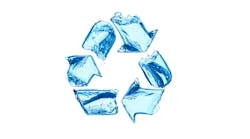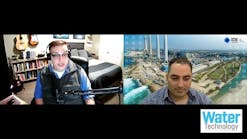Radionuclides are elements or isotopes whose nuclei spontaneously disintegrate to release alpha particles (helium nuclei), beta particles (electrons), or high energy gamma radiation. Some produce more than one emission. Most radionuclides are natural and there are also radionuclides that can be made by nuclear bombardment of nuclei by sub-atomic particles.
The number after the element name (e.g. for carbon, C-12) is the total number of protons and neutrons in the nucleus. The number of protons defines the element (C = 6), so the number of neutrons (C-12 = 6) can be variable yielding different isotopes of the same element (e.g. C-13 or C-14).
Some nuclear configurations are inherently unstable so the nucleus will spontaneously disintegrate with time. This is a fixed value for each radionuclide and is measured as the half-life, i.e. the time required for half of the nuclei to disintegrate. When this occurs, energy is released and one or more different stable or radioactive elements are produced.
Many natural elements have radioactive isotopes, e.g. potassium 39 is stable and potassium 40, consisting of 0.012 percent of natural potassium, is a beta emitter with a half-life of 1.248 million years. Carbon 12 and carbon 13 are stable and carbon 14 (0.0000000001 percent) has a half-life of 5,730 years. Carbon dating is accomplished by determining the amount of remaining C-14 present compared to total C and back calculating decay time based upon the known half-life.
Radionuclides in the diet and water are referred to as radioactive contaminants. All radionuclides are regulated by the Environmental Protection Agency (EPA) in drinking water. Radium-226 and -228 have specific MCLs because of their common presence in some waters. The others are collectively grouped as alpha emitters (gross alpha) and gross beta and photon emitters.
Uranium is also regulated, but because it is a very inactive element (half-life of 4.468 x 109 years), its regulation is based upon its chemical toxicity in the kidney rather than its radiotoxicity.
Occurrence:
- Most of the radioactivity found in drinking water comes from naturally occurring sources, such as rock types. These rock types hold traces of radioactive elements with radium being the element of greatest concern.
- All water has some degree of radioactivity that cannot be removed. Natural water has stable H-1 (99.9844 percent hydrogen or protium), stable deuterium (0.0156 percent H-2) and a trace amount of radioactive tritium (H-3). Tritium is a beta emitter with a half-life of .32 years.
- While most of the U.S. has low levels of mineral radioactivity, some Midwestern groundwaters are known to have significantly higher averages of radium levels.
- The most common radioactive mineral elements found in groundwater are: Radium-226, radium-228 and uranium-238. All of which are of natural origin.
- Some beta and photon emitters can come from nuclear power plants and other facilities that use radioactive material for manufacturing. However, radionuclides releases are tightly regulated and exposures from man-made sources are minimal relative to natural background radiation.
Health effects:
- Radium exposure has been known to cause bone cancer and historically in watch dial painters who used radium containing paint to produce numbers that glowed. They would tip their brushes with their lips.
- Uranium can become toxic to the kidneys.
- Radon-222 is a noble gas in the environment (groundwater, soil and indoor air) with a half-life of 3.8 days. It is produced in the decay series beginning with uranium and thorium. It is found in some groundwaters, however, airborne exposure is the greatest risk. Most non-smoking related lung cancers are thought to be associated with radon exposure.
Water treatment:
- There are several methods for treating radionuclides and each case depends on the contaminant’s chemical and physical characteristics and the water system’s characteristics.
- Known technologies used to treat radionuclides include: Ion exchange, reverse osmosis, lime softening, greensand filtration, electrodialysis and aeration for radon.
- Cation exchange water softening effectively removes radium because it is a cation similar to calcium or magnesium. Uranium exists as the uranyl anion in nature so it can be removed by anion exchange.
- Lime softening removes radium from drinking water in large plants.
- Reverse osmosis removes all minerals including radium and uranium with high efficiency.
In the news:
- A study by U.S. Geological Survey (USGS) shows potentially harmful levels of naturally occurring arsenic, uranium, radium, radon and manganese have been found in some bedrock groundwater that supplies drinking water wells in New England. While the presence of contaminants, such as arsenic, in some groundwater was already known, this new study identifies several that hadn’t been previously identified. This new report also provides information on the type of bedrock geologic formations where high concentrations are most likely to be found, which will help identify areas most at risk of contamination.
- Many residents in the San Angelo, Texas, area are raising concerns about the health effects of drinking water from the Hickory Aquifer that contains radium. The City Council will be holding a meeting to decide what type of radium removing treatment will be installed. The aquifer currently has about seven times the amount allowed of radium and possible treatment options include reverse osmosis and ion exchange.
Regulation:
- The EPA has set a Maximum Contaminant Level (MCL) for radium in drinking water at 5 pCi/L (picocuries = 10-12 curies). The curie is a very large unit and approximately the amount of nuclear disintegration from 1 gram of radium. So, 5 pCi/L represents a very small mass of radium. The international unit is the bequerel (Bq) = 1 nuclear disintegration/second. One Ci = 3.7 x 1010 Bq.
- The MCL established in 1976 for alpha emitters (gross alpha) is 15 pCi/L, which does not include radon and uranium.
- Beta and photon emitters have an MCL of 4 mrem/year, which is not a concentration, but an unusual term referring to the cumulative absorbed dosage efficacy and risk of the radionuclide. The term mrem means: Milli roentgen equivalent man. The common term used outside of the U.S. is the sievert. A rem is equal to 0.01 sievert, so a millirem is equivalent to 0.00001 sievert. For perspective, it is estimated that a 25 rem dose will increase the risk of cancer and heritable effects by 0.05 percent in a lifetime.
- The EPA MCL and the World Health Organization (WHO) drinking water guideline levels are 30 µg/L for uranium based upon chemical toxicity in the kidney.
Sources: Environmental Protection Agency, World Health Organization, National Environmental Services Center.
Dr. Joseph Cotruvo is president of Joseph Cotruvo and Associates, LLC, Water, Environment and Public Health Consultants. He holds a Ph.D. in Physical Organic Chemistry and is a member of the World Health Organization’s Guidelines for Drinking-water Quality Committee and expert advisory groups on drinking water quality, desalination, wastewater and water reuse. He is a former director of the U.S. EPA Drinking Water Standards Division.

